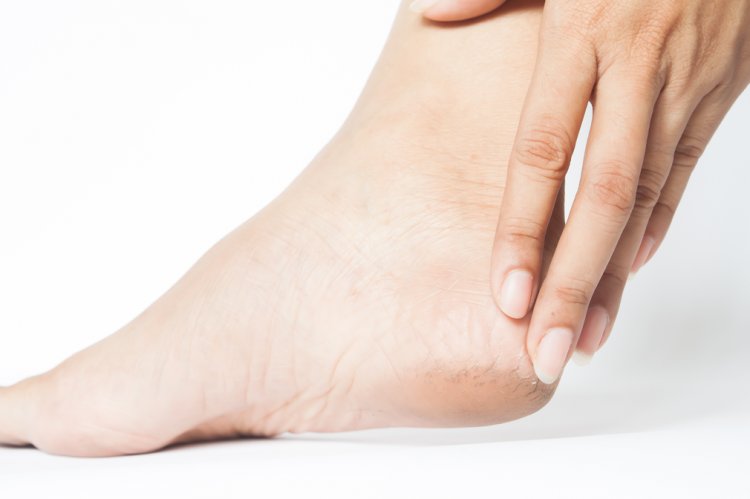Memory updated Foot Care Essentials: How to Combat and Prevent Cracked Heels
Cracked heels, medically known as heel fissures, represent a common foot condition affecting individuals across different age groups. This condition arises when the skin surrounding the heel becomes excessively dry, thickened, and eventually develops deep cracks. Though usually not considered a serious health issue, cracked heels can lead to discomfort, pain, and in severe cases, infection if not properly managed. A comprehensive understanding of the causes, symptoms, and treatment options for cracked heels is imperative for maintaining optimal foot health.

Causes of Cracked Heels:
Various factors contribute to the development of cracked heels:
-
Dry Skin: Insufficient moisture in the skin, often exacerbated by environmental factors such as cold weather, low humidity levels, and excessive bathing or showering, can result in dryness and subsequent cracking of the heels.
-
Prolonged Standing: Occupations or activities requiring prolonged periods of standing or walking, particularly on hard surfaces, can exert excessive pressure on the heels, contributing to the formation of fissures.
-
Obesity: Excessive body weight can exert added strain on the heels, increasing the likelihood of developing cracks in the skin.
-
Inadequate Footwear: Wearing ill-fitting shoes or open-back footwear that fails to provide adequate support and cushioning can exacerbate heel fissures.
-
Underlying Medical Conditions: Certain medical conditions like eczema, psoriasis, diabetes, and thyroid disorders can compromise skin health, leading to dryness and susceptibility to cracked heels.
Symptoms of Cracked Heels:
The symptoms associated with cracked heels may vary in severity but commonly include:
-
Visible Cracks: Pronounced, deep fissures or cracks along the outer edge of the heel, which may extend into the deeper layers of the skin and potentially cause bleeding or pain.
-
Dryness and Flakiness: The affected area often exhibits dry, rough skin with a tendency to peel or flake, accompanied by sensations of itching or redness.
-
Discomfort During Weight-Bearing Activities: Cracked heels can result in discomfort or pain, particularly when pressure is exerted on the affected area during walking or standing.
-
Bleeding or Infection: In advanced cases, the cracks may deepen, leading to bleeding or even infection, which necessitates prompt medical attention to prevent complications.
Treatment for Cracked Heels:
Effective management of cracked heels typically involves a multifaceted approach encompassing preventive measures and targeted therapies. Key strategies include:
-
Moisturization: Regular application of a high-quality moisturizer or emollient to the heels, ideally twice daily, helps to replenish moisture, soften the skin, and prevent further drying and cracking.
-
Exfoliation: Gentle exfoliation using a pumice stone, foot file, or exfoliating scrub aids in removing dead, hardened skin cells, thereby promoting smoother, healthier skin texture.
-
Hydration: Adequate hydration through regular water intake is essential for maintaining overall skin health and preventing excessive dryness.
-
Footwear Selection: Opt for well-fitted, supportive shoes with adequate cushioning and shock absorption to minimize pressure on the heels and reduce the risk of fissure formation.
-
Foot Soaks: Periodic soaking of the feet in warm water infused with Epsom salts or mild soap can help to soften the skin, making it more receptive to moisturization and exfoliation.
-
Overnight Treatment: Apply a generous layer of moisturizer or specialized heel balm to the heels before bedtime, covering them with cotton socks to enhance absorption and lock in moisture overnight.
-
Medical Consultation: Consultation with a healthcare professional is recommended for individuals with severe or persistent symptoms, as they may require prescription-strength creams or ointments to facilitate healing and prevent complications such as infection.
By adopting these proactive measures as part of a regular foot care regimen, individuals can effectively manage cracked heels and safeguard their overall foot health. In conclusion, cracked heels, though common, should not be overlooked, as they can cause significant discomfort and compromise foot health if left untreated. Prioritizing foot health as an integral component of overall self-care promotes enhanced well-being and ensures optimal mobility and comfort.
#CrackedHeels #HeelFissures #FootCare #DrySkinTreatment #FootHealth #SkinCracks #Podiatry #SkinHydration #Moisturization #Exfoliation #FootwearSelection #FootSoaks #MedicalConsultation #SevereCrackedHeels #PreventHeelFissures #BestMoisturizers #PodiatristRecommended #HeelCare #HealthyFeet #DiabeticFootCare
Disclaimer:
The information provided in this article is for educational purposes only and should not be considered medical advice. If you have any health concerns or are experiencing symptoms, it is important to consult with a healthcare professional, such as a doctor or clinic, for proper diagnosis and treatment. Always seek the advice of your doctor or other qualified health provider with any questions you may have regarding a medical condition. Do not disregard professional medical advice or delay in seeking it because of something you have read in this article.
What's Your Reaction?





















